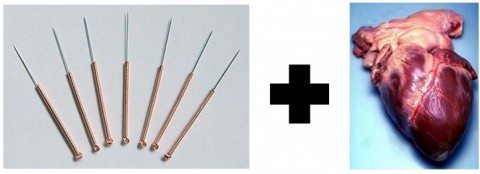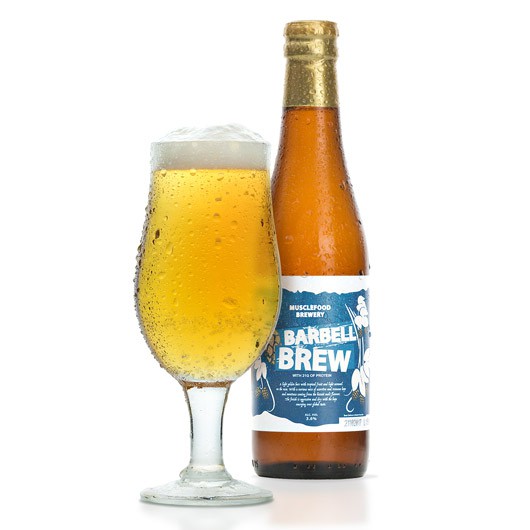Posted by Mark Crislip on March 4, 2016 Pictured: Really, really bad idea, on all levels; literal, metaphorical, pedagogical, tautological, hemodynamic, pathological, basically all the -ics, -cals, and -als. I have spent the last 35 years mostly in acute care medicine. Spending my day in the hospital gives me the bias that we are fragile creatures who can die unexpectedly and easily. Much of the time we pull patients through, but I have a great respect for acute diseases. Over the years I have seen too many people wake up feeling good and dead by dinner time There is a…

Pictured: Really, really bad idea, on all levels; literal, metaphorical, pedagogical, tautological, hemodynamic, pathological, basically all the -ics, -cals, and -als.
I have spent the last 35 years mostly in acute care medicine. Spending my day in the hospital gives me the bias that we are fragile creatures who can die unexpectedly and easily. Much of the time we pull patients through, but I have a great respect for acute diseases. Over the years I have seen too many people wake up feeling good and dead by dinner time
There is a reason the phrase is “as serious as a heart attack”. Heart attacks and heart arrhythmias can kill. About 5% of patients admitted to the hospital with a heart attack die. And 250,000 have sudden death each year, never making it to the hospital, succumbing to their ventricular fibrillation precipitated by acute coronary ischemia. Ted Cruz notwithstanding, you need a functioning heart to live.
Scary stuff. So when I read Pubmed articles like “Effects of Acupuncture at the Yintang and the Chengjiang Acupoints on Cardiac Arrhythmias and Neurocardiogenic Syncope in Emergency First Aid“, I wonder what is going on in the minds of some people.
And now for a terrible idea
The authors, acupuncturists and non-MDs (physiotherapists as best I can tell), note in their introduction that:
Epidemiological studies report overall mortality rates of 30% on average, with half the deaths occurring in the first 2 hours of the event and 14% of the deaths occurring before the patient receives any medical care.
So what do they do? Think their experience with guitar hero makes them ready for play in place of Jimmy Page.
A 45 year old woman … had a previous history of a valvuloplasty for rheumatic disease and two acute myocardial infarctions, followed by four catheterizations and an angioplasty.
So a patient with severe cardiac disease, someone who could easily die from their heart disease. When the patient has syncope, tachycardia, hypotension, tachypnea, and precordial pain, all signs of impending death, these acupuncturists responded by calling 911 and then? They needled and pushed:
…the YinTang acupoint and stimulation of the ChengJiang acupoint through acupressure were performed for 20 minutes…The harmonization of an acupuncture point was performed with the needle inserted perpendicular to the energy channel…Needles were inserted at the YinTang and the ChengJiang acupoints, and the patient received nonstop 1 minute stimulation…Stimulations by using the needles were then performed every 5 minutes, and the vital signs were monitored by using a pulse oximeter, a sphygmomanometer, a stethoscope, and RR and blood glucose measurements. The needles remained in place for 20 minutes and were then removed, and the stimulation ceased. The patient’s condition was stabilized. After 20 minutes and after the acupuncture procedure had been completed, the mobile ICU arrived at the scene. Traditional Chinese medicine (TCM) states that the treatment of the heart must be addressed indirectly and not by the emperor (the heart itself), but rather through the emperors ministers (masters of the heart); in this case, however, the masters of the heart were not used because the purpose was to restore the vital functions through a harmonization of Shen.
I get chest pain reading this nonsense being performed on a high risk cardiac patient as if the gibberish means something.
Fortunately for the patient the episode was self-limited, as is sometimes the case. Of course, the acupuncturists took the credit for the improvement, believing the:
acupuncture at YinTang and ChenJiang acupoints induced cardiovascular responses, increased the limits of the body’s homeostasis, and normalized the patient’s condition in the case of syncope. Acupuncture using a combination of ChengJiang and YinTang acupoints had an immediate effect on the autonomic nervous system and on maintaining homeostasis and energy balance in the body.
This demonstrates how delusional alternative providers can be. They conclude:
However, it is worth mentioning that even though this technique is effective, the patient may still need to be referred to the Emergency Room.
You think? It gives me the willies to think people with potentially fatal processes are getting this kind of nonsense waiting for the ambulance to arrive. And it wasn’t in Asia, where acupuncture is part of the culture, but Brazil.
Who brags in the medical literature that they treated an acute cardiac event with pseudo-science and then, as an aside, suggests real medicine? The authors do not need a publication and approval of their Ethics committee, they need to be reprimanded for putting patients at risk through incompetence, since as best I can tell none of the authors are physicians who might take care of acute cardiac pathology. Which makes it worse. Next they will open a clinic in Florida.
Also, I have to mention that they have what look to be computer drawn representations of the acupuncture points on the human head and they have a black bar across the eyes so we can’t recognize the people in the drawing. What? It is so obvious that one is DB Cooper. After bailing from the plane he escaped to Brazil to become an acupuncture point model. Case sol-ved.
Sometimes I suspect I am spoiled by journals like Clinical Infectious Disease and The New England Journal Medicine where the articles are not produced by an 8th grader with a mimeograph machine.
Yet more terrible ideas
Others are trying to die from their heart attack. When Russ Mason of Micronesia was having his second heart attack his wife, who evidently wants the life insurance, took off for an acupuncturist:
In the 40 minutes I had to wait while she drove from Santa Lourdes to As Matuis and back, I was in dire distress. I couldn’t lay down, I couldn’t sit up, I couldn’t do much of anything. I took my meds and some aspirin and immediately felt the need to vomit, but nothing came out. What a wretch I was. I sipped some water with baking soda and that soothed me.
The acupuncturist took his pulse, knew the problem, and gave acupuncture to fix his heart. And for added measure:
Sometimes the doctor grabs me, vigorously rubs my head, my eye sockets, and, at one point, got me into a hammer lock and yanked me up in my chair. He said that my spine was out of alignment but that it was OK now.
Whoa.
Russ liked the personal attention:
Instead of one serious practitioner who did everything, there was a steady stream of doctors, nurses and other personnel who would breeze in, do something important and then breeze out again. I like the Chinese doctor better, frankly. It’s more personal and immediate.
And he concludes about his heart condition
I think I’ll be OK. That is my hope, anyway.
I hope so too. But given his current “doctor”, I would not be so optimistic.
I never meta worse analysis of terrible ideas
I keep wondering what in the hell Institutional Review Boards are doing. I was surprised to find there are enough clinical trials for angina and acupuncture to do a meta-analysis:
Total 8 RCTs, including 640 angina pectoris cases with 372 patients received acupuncture therapy and 268 patients received conventional drugs, were included.
They note:
Angina pectoris is a common symptom imperiling patients’ life quality.
Quality, hell, how about life?
In patients with stable [coronary heart disease], the annual mortality rate is 1% to 3%, and the annual rate of major CV events is 1% to 2%. In a registry of 38 602 patients with stable CHD, the 1-year rate of CV death was 1.9% (95% confidence interval, 1.7 to 2.1) and of CV death, myocardial infarction (MI), or stroke was 4.5% (95% confidence interval, 4.2 to 4.8).
Who in their right mind allows a theatrical placebo, or as I prefer, a curse removal, to be used in a clinical trial for a disease that kill 3% of people a year? China. I suppose it is a form of population control.
As is always the case, the ‘acupuncture’ was acupunctures: acupuncture or acupuncture plus moxibustion or acupuncture plus cupping or acupuncture plus ear pressure or electroacupuncture. As I have mentioned before, there is not acupuncture, but acupunctures, as many kinds as there are practitioners. And the authors do not see this as limitation of the studies.
And these studies compared acupuncture with controls that included Shanhai Dan capsule (a popular angina treatment) or, on occasion, real medications. The only saving grace for the poor soon-to-have-sudden-death patients enrolled in the studies is that the interventions lasted at most 4- 6 weeks.
None of the studies had a sham acupuncture control and the authors were unaware, or didn’t care, about the classic Western (used sarcastically) studies of internal mammary artery ligation for angina back in the 1960s, where sham surgery was as effective as the real procedure for improving angina. Those who do not remember the past are condemned to repeat it.
They suggest that:
Acupuncture may be an effective therapy for stable angina pectoris.
Which can only be met with a snort of derision and a suggestion that Chinese cardiac patients to not buy any long-term magazine subscriptions.
Another (!!!) meta-analysis of acupuncture for angina suggested:
However, compared with conventional treatment, acupuncture showed a longer delay before its onset of action. This indicates that acupuncture is not suitable for emergency treatment of heart attack.
Oh, Brazil, are you paying attention?
Of course, the studies are all are “high risk of bias” and as a result:
The findings showed very low evidence to support the use of acupuncture for improving angina symptoms and ECG of angina patients. However, the quality of the trials included in this study was low. Large and rigorously designed trials are needed to confirm the potential benefit and adverse events of acupuncture.
A problem with many of these studies is the studies are in China, published in Chinese journals and, as has been pointed out before, there are no negative acupuncture studies in China.
Conclusion: Treating a heart attack with acupuncture is a terrible idea
Angina is treated both chronically and acutely. You can’t be pushing a lawnmower, have chest pain, then run, or walk slowly, to get acupunctures. For the duration of the study, they get to stop the routine of their day and go lie down somewhere, relax, and get acupunctures, removing, for a time, any risk for angina. Nothing like nap time to reduce demand on the heart. These patients are compared to people who continue to live their normal lives. Not a surprise that people who take time off to lie down have fewer anginal attacks than those who remain active. It is a methodological hole you could fly a 747 through.
At least no one, well almost no one, uses acupuncture for an acute myocardial infarction (heart attack).
Source: Acupuncture for Coronary Artery Disease : Science Based Medicine





